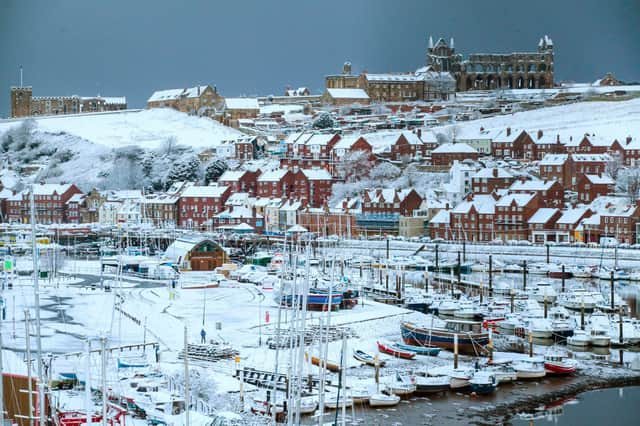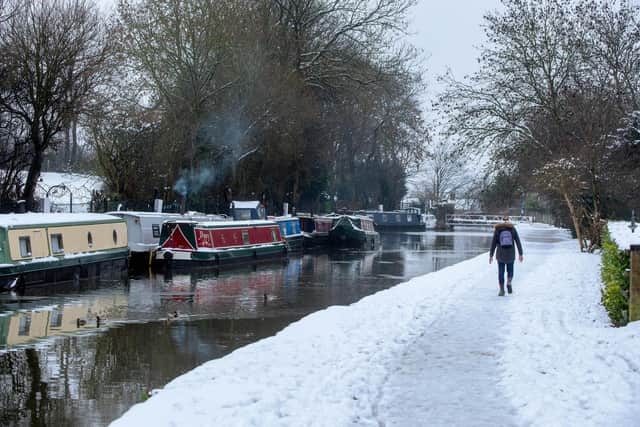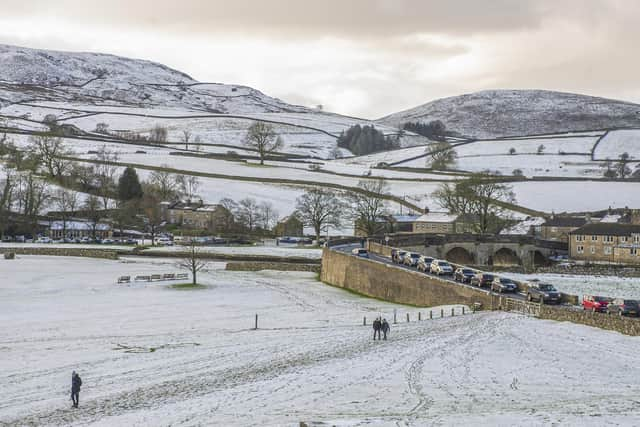A look at White Christmases past across Yorkshire


The standards for a white Christmas are low. The Met Office definition is simply that one single snowflake must be observed falling from the sky during the 24 hours of December 25.
Since 1960, the north of England has had 26 white Christmases. The last time Yorkshire saw a white Christmas was in 2010 when the entire county was blanketed with snow on Christmas Day.
Advertisement
Hide AdAdvertisement
Hide AdThousands of North and East Yorkshire residents woke up to a white Christmas in 2020.


Areas across both North and East Yorkshire saw heavy spells of snow fall throughout the night, with some continuing to see heavy snow set as they awoke on Christmas Day.
People in some parts of Yorkshire also woke up to a white Christmas in 2021 as the Met Office confirmed snow was sighted on the Dales. Yorkshire also enjoyed a white Christmas in 1956 and 1970.
If it does snow at Christmas –history shows there could be ice, snow and floods during the winter months.
Advertisement
Hide AdAdvertisement
Hide AdIn 1918 the Beast from the East hit Britain at the end of February bringing with it 10 days of heavy snow and freezing temperatures. Its return is heavily predicted for the start of next year.


A pier in North Bay in Scarborough was built between 1866 and 1869 and cost its shareholders £6,000.Unfortunately, the pier suffered from isolation and inaccessibility and eventually the original owners went bankrupt and the pier was eventually sold at auction for £1,240.In January1905 a tremendous gale destroyed it. Large crowds gathered to view the desolate aftermath, which left the end of the pier severed from the shore. It was never rebuilt.The winter of 1947 is remembered by all who lived through it. In January22 1947, the temperature dropped like a stone and the snow began in earnest.The severe weather was not to relent until mid-March. From January 22 until March 17 snow fell every day somewhere in the UK.
Snow drifts were up to23feet deep while, at its lowest, the temperature plummeted to-21°C.The disruption seriously affected the coal supply to power stations. Domesticpower supplies were reduced to19 hours per day, which continued until the end of April.Flocks of sheep and herds of cattle were buried and froze or starved to death. Vegetables became frozen in the ground.
On the North Yorkshire Moors, snow-filled the roads and lanes,cut off villagesandcaused considerable difficulties for farmers.
Advertisement
Hide AdAdvertisement
Hide AdIn Westerdale, residents hitched their horses to sledges and, with the lanes completely blocked by snow, made their way across the fields to Castleton.Coal could be obtained from the railway station here and limited food supplies were available in local shops but it took a long time to get there and even longer to get home.
Villages became completely separated from one another and remote farms entirely isolated. Moorland folks, however, were used to hard work andharsh conditions and simply ploughed on with life.
Largely self-sufficient–and certainly self-supporting– the communities of the North Yorkshire Moors managed as best they could.Sadly, even once the snow abated, worse was to follow as 5he mid-March thaw and additional rain caused widespread flooding.It was the wettest March for 300 years. It was almost 20 years later when the county was hit by another severe winter.
With temperatures so cold the sea froze in places,1963 is one of the coldest winters on record.
Advertisement
Hide AdAdvertisement
Hide AdBringing blizzards, snowdrifts, blocks of ice and temperatures lower than -20°C, it was colder than the winter of 1947, the coldest since1740.
The snow blanketed the country for up to two months in some parts. In JanuarySkipton recorded its lowest temperature in years – a bitter 4F (-15C) and, for thewhole month, the minimum temperature never rose above freezing.
Leeds to Liverpool Canal and rivers froze over and frost penetrated the ground to a depth of three feet, cutting off water supplies to hundreds of homes. Winds created drifts of more than 20feet as heavy snow was followed by winds. Railway workers and special snow ploughs dug out trains stuck in drifts and worked tirelessly to keep the track clear.